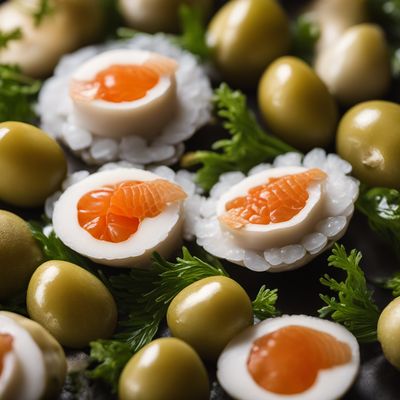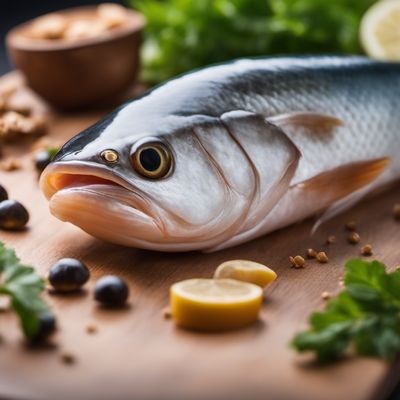
Ingredient
Meagre
The King of the Sea
Meagre is a large, silver-colored fish with a streamlined body and a distinctive forked tail. It has a mild and slightly sweet flavor with a hint of nuttiness. The flesh is firm, moist, and flaky, making it suitable for grilling, baking, poaching, or pan-searing. Meagre fillets are often thick and can hold their shape well during cooking.
Origins and history
Meagre has a rich history and is highly regarded in Mediterranean cuisines, particularly in countries like Spain, Italy, and Greece. It has been prized for centuries for its culinary qualities and is often considered a delicacy. Meagre is also popular in other parts of Europe and is gaining recognition in international markets.
Nutritional information
Meagre is a good source of lean protein, omega-3 fatty acids, and essential minerals such as selenium and magnesium. It is also low in calories and fat. Consuming meagre as part of a balanced diet can contribute to a healthy lifestyle.
Allergens
Individuals with fish allergies should avoid consuming meagre, as it can trigger allergic reactions.
How to select
When selecting meagre, look for fillets or whole fish that have a shiny and moist appearance. The flesh should be firm to the touch and have a mild sea-like aroma. Avoid fish with dull or discolored skin, as this may indicate poor quality or freshness. Fresh meagre should have clear eyes and bright red gills.
Storage recommendations
To maintain its freshness, meagre should be stored in the refrigerator at a temperature of 32°F to 38°F (0°C to 3°C). Wrap the fish tightly in plastic wrap or place it in an airtight container to prevent it from drying out. It is best to consume meagre within 1-2 days of purchase for optimal flavor and quality.
How to produce
Meagre is primarily caught in the wild, but it can also be farmed in some regions. If you have access to a suitable body of water, you can consider raising meagre in a controlled environment such as a fish farm or aquaculture facility.
Preparation tips
Meagre can be prepared in various ways, such as grilling, baking, poaching, or pan-searing. It pairs well with citrus flavors, fresh herbs, and Mediterranean spices. Consider marinating the fish before cooking to enhance its flavor. Meagre can be served as a main course, in fish stews, or as part of seafood paella.
Substitutions
Sea bass or snapper can be used as substitutes for meagre in certain recipes. However, the flavor and texture may differ slightly.
Culinary uses
Meagre is commonly used in Mediterranean cuisines, particularly in dishes like grilled meagre with lemon and herbs, meagre ceviche, meagre en papillote, and meagre fillets with tomato sauce. It is also enjoyed in sushi and sashimi preparations.
Availability
Meagre is commonly available in Mediterranean countries such as Spain, Italy, Greece, and France. It can also be found in other European countries and is gaining popularity in international markets.
More ingredients from this category » Browse all

Lesser sand eel
Exploring the Delicate Flavor of Lesser Sand Eel

Dentex
The King of the Mediterranean: Discovering Dentex

Lizardfishes
The Versatile Delicacy from the Sea

Red drum
The Southern Symphony

Japanese seabass
The Delicate Beauty of Japanese Seabass

Bogue
The Versatile Bogue: A Hidden Gem of the Sea

Salema
The Versatile Salema

Sea bass
The Ocean's Delicacy

Sea catfishes
Sea Catfish: A Versatile Delicacy from the Deep

Bombay-duck
The Delicacy of the Arabian Sea

Snappers
The Irresistible Crunch of Snappers

Yellow croaker
The Golden Catch